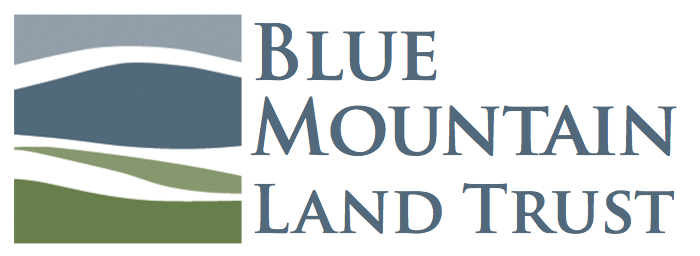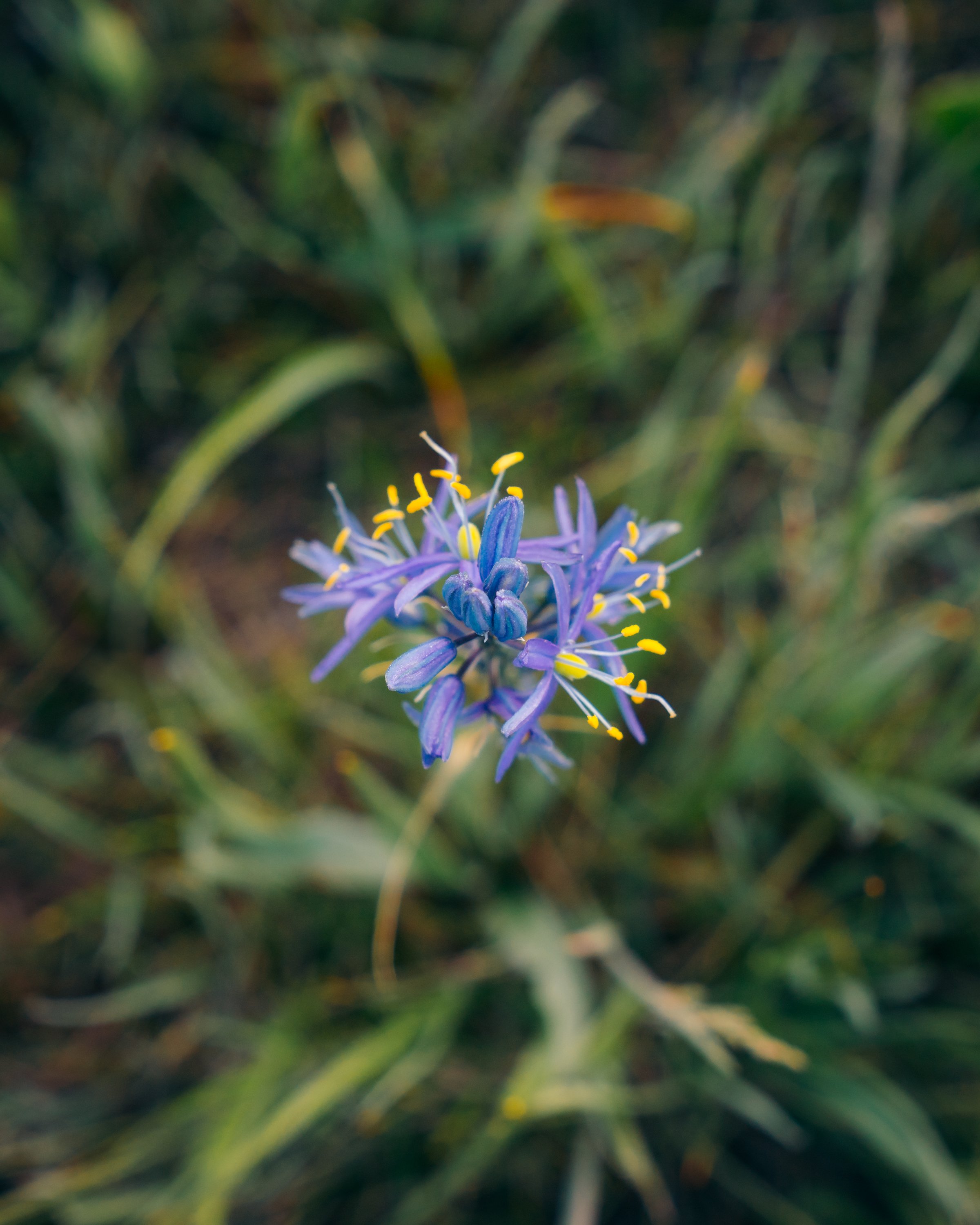Camas and conservation: BMLT field survey at Phipps Meadow
GRANT COUNTY, OR – How do you protect vital plant species during restoration? BMLT's latest project at Phipps Meadow aims to find out.
During peak floral bloom, the BMLT stewardship team set out to identify plant species at Phipps Meadow. As an organization, we want to better understand a key set of management questions relevant to restoration design: (1) What culturally important or sensitive plant species are found in the meadow, and (2) How can we identify both the abundance and location of these species to ensure restoration efforts have a minimal short-term negative impact on these plants? One key focus species found in abundance on the property was camas, a significant First Food for Tribes across the Pacific Northwest.
Camas in bloom at Phipps Meadow. PHOTOGRAPHS BY MATT FRANKLIN
During the survey, the team documented over 50 wildflower species in the meadow alone, using the app Seek by iNaturalist, which allows for rapid species identification through photos. This year’s visit yielded a very important and unexpected result: the southeast portion of Phipps Meadow is particularly abundant in camas, a location previously unknown to restoration design teams.
“In previous years, BMLT staff identified several small patches on the west side of the meadow, which informed the preliminary design of the planned meadow restoration. With our rapid assessment protocol, we now have a much better understanding of the distribution of camas in Phipps Meadow,” said Andrew Addessi, BMLT Stewardship Director.
Camas (Camassia quamash) is a perennial herbaceous plant native to the Pacific Northwest. It features striking blue to purple star-shaped flowers that bloom in dense clusters on tall stalks during the spring and early summer. The plant's grass-like leaves emerge from an underground bulb, which is an important food source for many Pacific Northwest Tribes, including the Confederated Tribes of the Warm Springs Reservation of Oregon. Camas bulbs are traditionally harvested, cooked, and consumed as a staple carbohydrate, rich in nutrients and cultural significance. However, camas distribution is far more limited today due to the wide-scale conversion of wetland habitats to agriculture.
By understanding where these sensitive species thrive, BMLT can plan restoration efforts to protect and minimize short-term negative impacts on these plants. We strive to see an even more diverse collection of wetland-dependent native plant species as a long-term outcome of this important habitat restoration work. The survey information will guide additional restoration design plans focused on protecting these important areas and Camas patches.
BMLT is dedicated to ecological restoration and cultural preservation at Phipps Meadow. These efforts aim to ensure biodiversity thrives and cultural heritage endures for present and future generations.







